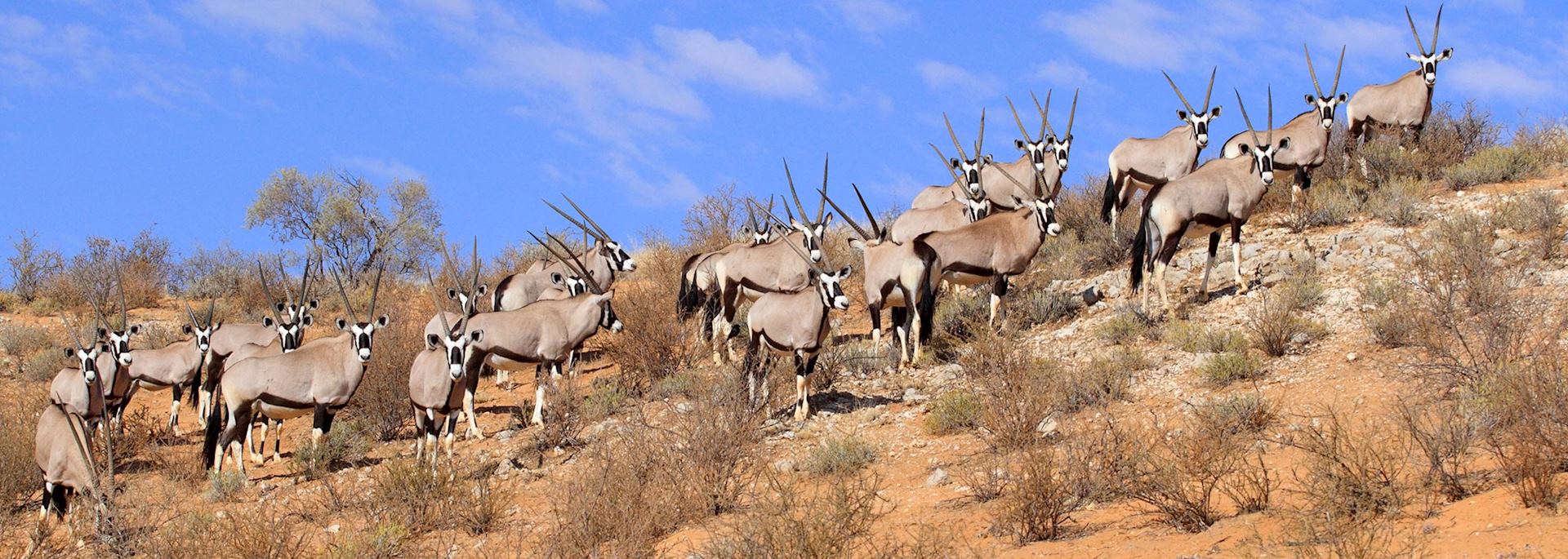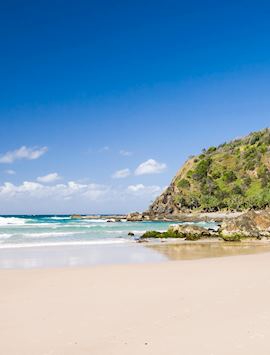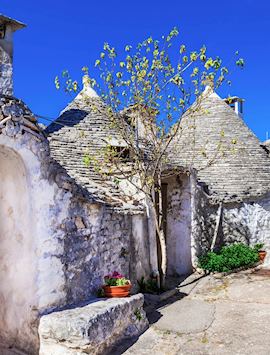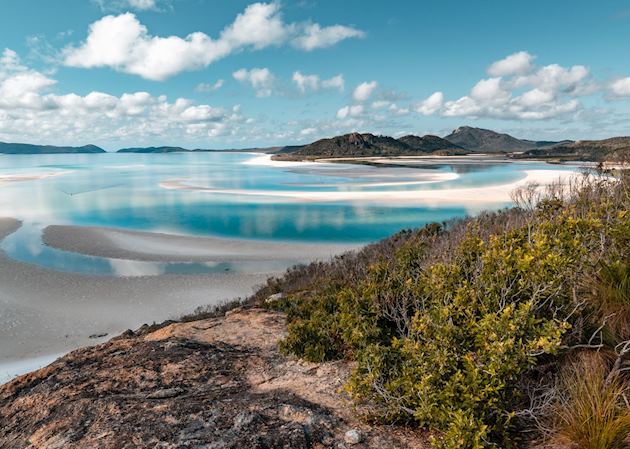No matter how many times you’ve been somewhere, there’s always something to discover or a fresh insight to gain. We regularly visit new places and trial new experiences, from delving deep into Malaysian Borneo’s forests to glamping in Mexico to offer you something different. Here, we share some of our latest finds from around the world.
Calanoa Jungle Lodge in the Colombian Amazon
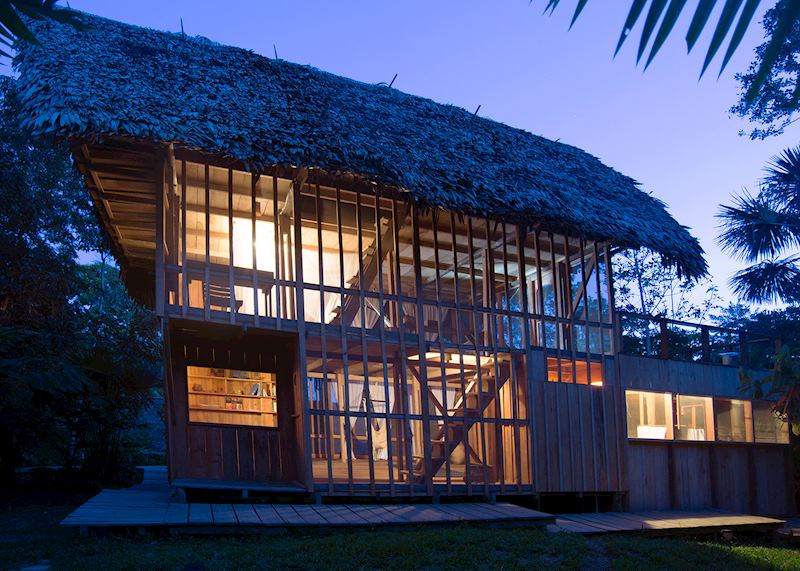
Colombia’s chunk of Amazonian rainforest has been on our radar for a while, but a few weeks ago Fiona, one of our specialists, went to spend some time there.
She stayed in an eco-friendly river lodge called Calanoa, a property set up by respected Colombian photographer Diego Semper in a natural hardwood reserve. It sits right on the main Amazon itself, and is yet enticingly remote: there’s so little light pollution that at night you can sometimes see the Milky Way.
Fiona says, ‘I’d be delighted to recommend Calanoa to anyone looking for an Amazon stay. It’s a no-frills lodge: there’s no hot water, for example, but frankly when it’s 35 C (95 F) outside you don’t really care. I especially loved sitting on the lodge’s pier after dinner, watching fireflies.’
‘You might see pink and gray river dolphins, and look out for a particularly curious spectacle: a cloud of thousands of dragonflies hovering above a bed of water lettuce. You can also visit a nearby indigenous village, Vergel, where local José Antonio is teaching children to sing in their native language. Hearing them makes for a really intimate, authentic experience.’
Glamping in Baja California, Mexico
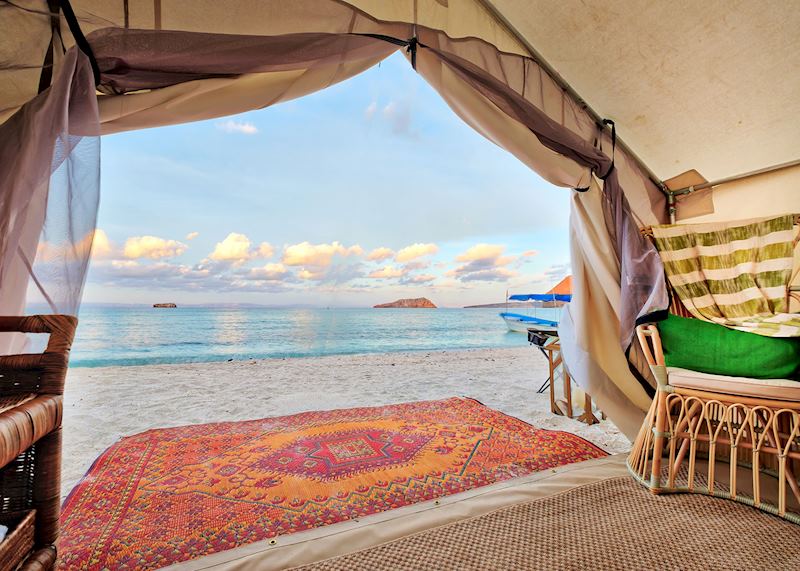
We recently enjoyed a stay at Camp Cecil, a seven-tent glamping experience on the national park of Espíritu Santo Island. This far-flung islet with its isolated slices of sand lies just off the coast of the Baja Sur region of Baja California.
Nature lovers will be in their element. Magnificent frigatebirds swoop overhead, nesting in the rocky outcrops surrounding the island, while spinner and bottlenose dolphins frequent the surrounding sea, which also hosts pods of whale sharks from December to April.
It’s a place for anyone seeking refuge from the busyness of mainland Baja, as this island is usually only accessible via daytime snorkeling tours. This means that before 10am and after 3pm, you’ll see no one else around (apart from your fellow glampers — oh, and the 80-year-old fishermen brothers who provide the camp with fresh catches).
You can kayak around sunken mangroves, snorkel with sea lions, and hike the island’s craggy desertscape.
While the camp has to abide by strict environmental regulations (such as using long-drop toilets and limited shower facilities), we think the overall experience still feels high-end: you’ll sleep in roomy tents with cotton linens and duvets, and dine on three-course meals cooked up using fresh local ingredients and imported wines.
At the end of a day’s exploring, you return to a cool towel, and can sip freshly made cocktails while watching the sun set over the Sea of Cortez.
Food touring around Byron Bay, Australia
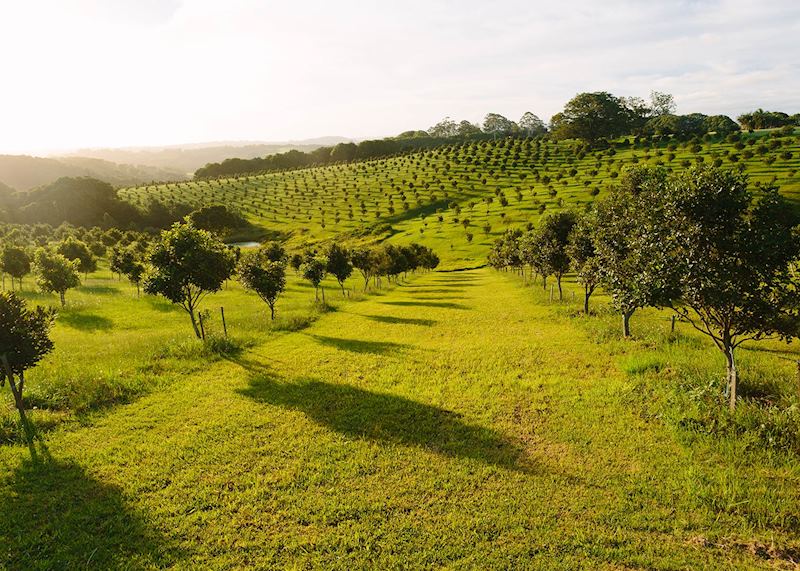
Inland from always-busy Byron Bay you’ll find a mellow hinterland of rolling farmland, rainforests and fantastical waterfalls. Then, toward Ballina, you’ll see a hilly coastline festooned in greenery. But the scenery is only one of the delights of this increasingly popular part of New South Wales: it’s also becoming something of a prize destination for gourmets.
We recently took a small-group day tour around the area, visiting farms and providores (suppliers), and sampling local produce. The tour also includes a chance to dine at the sustainable and much-acclaimed Harvest restaurant (a proud owner of a ‘Hat’, the Australian equivalent of a Michelin star).
Locally grown, native ingredients are at the forefront of their menus; in fact, all the food served at Harvest is grown within 50 km (31 miles) of the premises. Much emphasis is placed on pickling and fermenting, and many ingredients (such as herbs) are foraged.
Highlights to look out for? Smoked and spiced macadamia nuts, kingfish, Kangaroo loin, and gin — made largely with botanicals grown on the area’s farms.
A cultural food tour around Mauritius
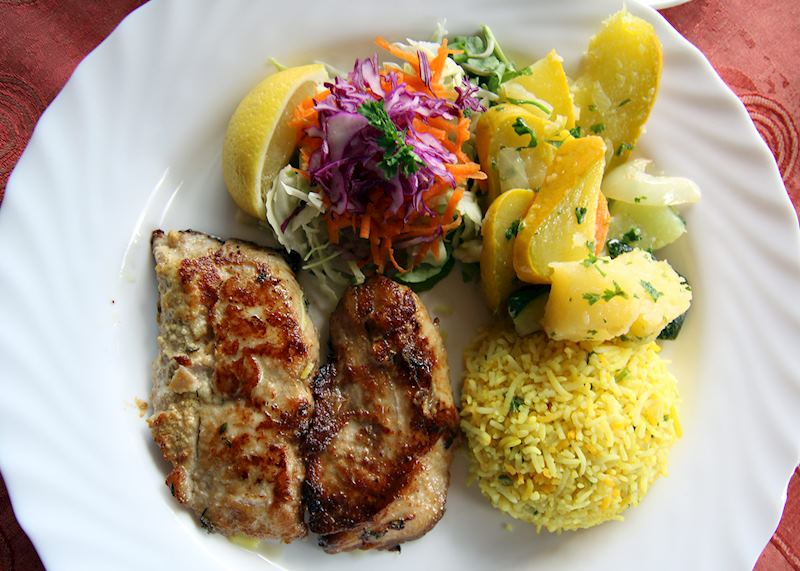
It may be an established beach destination, but we’re eager to show you a more in-depth view of Mauritius in our latest private guided tour. The island has been populated by waves of traders, colonists, slaves and indentured laborers over the centuries, creating a blend of cultures that’s best appreciated by sampling Mauritian cuisine.
Walking between the faded colonial villas in the capital Port Louis, try maize pudding, a cornmeal recipe brought over by African slaves or chili cakes served in a French baguette. One of the most popular snacks is dholl puri, a stuffed flatbread that’s prepared using traditional Indian techniques.
You’ll then head inland to join Marie-Michelle for a traditional Creole lunch. A keen cook, she’ll show you how ingredients are ground together on a stone to form a smooth curry paste. Her family will join you as you sit down together to eat, and might teach you some sega dance moves once you’ve finished.
After lunch, you’ll visit Domaine Les Aubineaux, a 19th-century French colonial house that was once central to the Mauritian tea trade. It’s now been converted into a tea museum with memorabilia, photos and a tea-tasting room.
Deramakot Forest Reserve, Malaysian Borneo
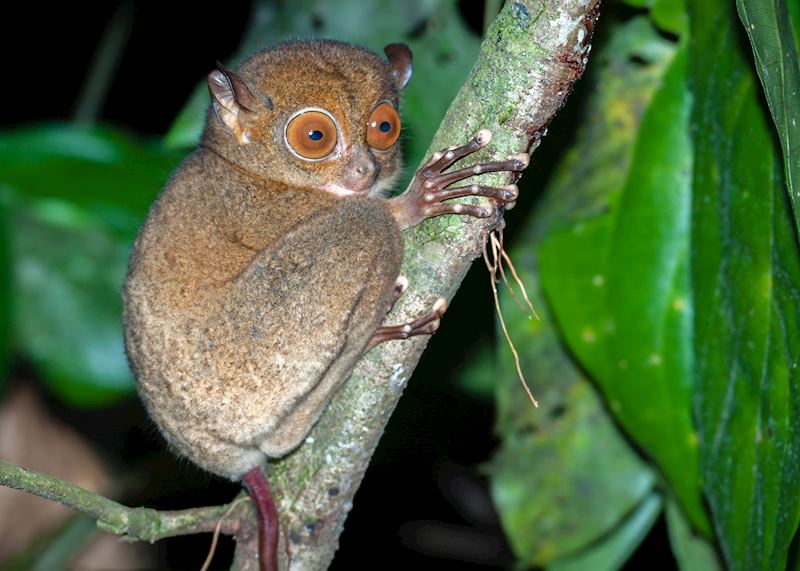
You won’t find Deramakot in a guidebook or on a map. One of the first FSC-certified forestry reserves, Deramakot is a mixed dipterocarp rainforest that’s been managed as a sustainable commercial project since the 1990s.
A flagship reserve, its aim is to show how sustainable logging can minimize its impact on rainforest ecology and produce low-volume, high-quality (and high-priced) timber. Trees are carefully selected and removed in a way that limits impact on the surrounding forest. The aim is to use this as a blueprint to halt deforestation across Borneo.
The stewardship of the forest has worked — it rustles with wildlife. The list of sightings is huge, with civets, leopard cats, langurs and macaques common. You may see tarsiers, slow lorises, orangutans and elephants (you’re almost guaranteed to see their dung at any rate). It’s also become the best place in Borneo to spot the clouded leopards, although you need luck on your side.
This is a wildlife experience for the intrepid. From Sandakan, the nearest town, you’ll hop into a 4x4 that’s been loaded with provisions and drive four hours into the rainforest. The park headquarters, where the forestry staff and their families live, has two simple chalets that are looked after by their wives (who will also cook your meals).
If you’re happy with a basic level of accommodation (there’s air conditioning and en suite rooms) you’ll be rewarded with the freedom to roam as you wish — and you’re likely to be the only visitors. You can explore the forest from the back of a 4x4 with an experienced wildlife guide. You could set off in the early morning and drive through dawn, eating breakfast on route or, armed with a spotlight, head out after dark in search of nocturnal creatures.
Admire silver jewelry in Essaouira, Morocco

Essaouira is a sleepy seaside town, a calm contrast to the bustle of nearby Marrakesh. Originally a Phoenician trading post, the town still boasts 18th-century ramparts from a period when it was a Portuguese colony. (Game of Throne fans may identify it as the setting for the city of Astapor.)
Wandering through the narrow streets, one of our specialists recently discovered the Centre de la Bijouterie Artisanale Maalem Ali 1908, a small shop that sells traditional Amazigh jewelry. As the name indicates, the shop has been around since 1908 and the stock looks largely unchanged for the past century.
You’ll find densely engraved Hands of Fatima on pendants, as well as filigree bracelets, wide necklaces and elaborate earrings. Also be sure to look for ceremonial headdresses known as taj — literally translated, it means crown. Hung with coins and other charms, they are traditionally worn by brides.
Many of the silversmiths here are young women who happen to be deaf. They trained in the meticulous art of jewelry-making as a way of earning an income.
Visit a brand-new distillery outside of Kilkenny, Ireland
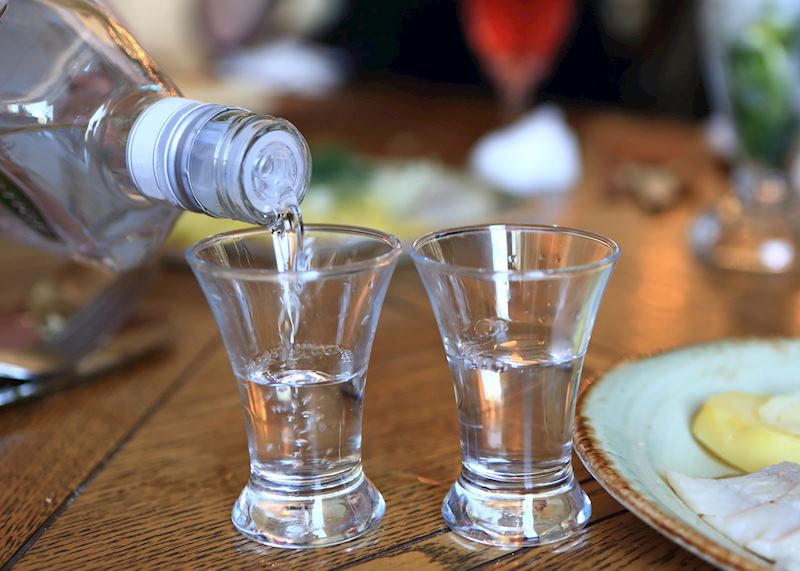
Inside a small family farm in the green and rolling countryside, Ballykeefe Distillery is one of Ireland’s newest artisanal whiskey operations. Owner Morgan Ging and his children have recently opened their doors to visitors — so recently, you can’t even sample their whiskey yet.
According to law, in order to be called whiskey, the spirit needs to be aged at least three years and one day. While their first batch slowly matures in barrels, the Gings are happy to serve their extra-dry gin and potato vodka, which has been distilled six times through their gleaming copper still. You can also sample poitín, a sort of Irish moonshine.
The drinks are served in converted stables, where visitors stand at a gleaming wooden bar. Samples are a part of the private tour, led by the family patriarch, Morgan. He is the latest scion of a long line of farmers — his family can trace its ancestry back to the earliest written records in the region.
Opening this distillery is the culmination of Morgan’s lifelong dream, to return the family estate to the glory days of farm distilleries. You can hear the passion and dedication in his voice as he walks you through the whole distilling process, from growing the barley to the final aging. Afterward, you can stroll out to see the fields and animals that he tends on the same land his ancestors have worked for so many generations.
Kgalagadi Transfrontier Park, South Africa

If you’ve experienced a traditional safari and are looking for something different, we recommend Kgalagadi Transfrontier Park, a new addition to our South Africa offerings. Namibia, South Africa and Botswana have joined forces to protect this little-visited part of the south Kalahari. Once you’re within the park boundaries there are no borders, leaving you to cross between countries freely (although you do have to enter and leave at the same point).
This is a hot, dry desert environment where dry riverbeds cut across red sand dunes. The calling card here is the density of Kalahari black-maned lion (which you stand a good chance of seeing) as well as the sheer remoteness of the destination. Wildlife doesn’t appear around every corner but if you’re patient, you might also see cheetah, leopard and a range of desert-adapted species including springbok, oryx, meerkats and bat-eared fox.
There are only a few lodges in the park including Ta Shebube Rooiputs, which is set in a private concession on the edge of a riverbed for optimum big-game viewing. This could be combined with a few nights at !Xaus Lodge, an ecolodge owned by the San bushman community. A chance to get completely off-grid, it’s self-sustaining with no phone signal, Wi-Fi or TVs.
Explore underground olive oil mills in Presicce, Italy
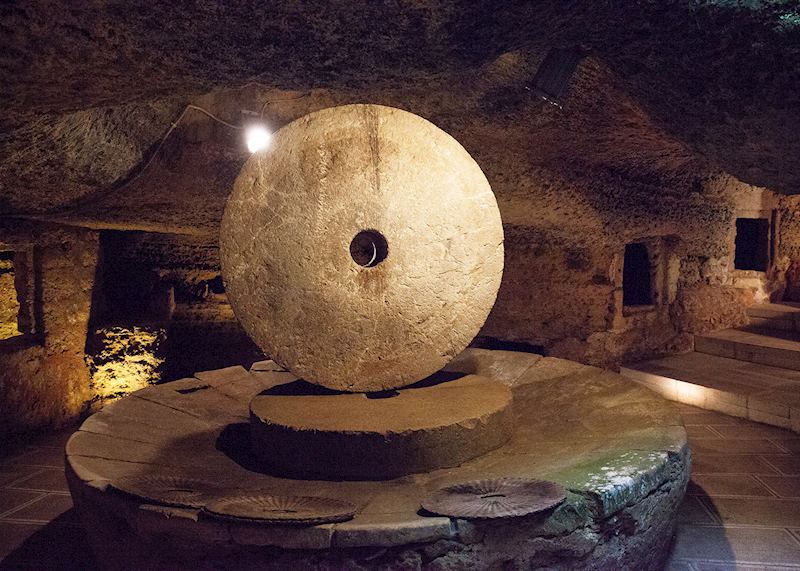
To get away from the crowds when we’re in Italy, we like to visit, one of the country’s more rural regions. Under its narrow, curving streets and elegantly faded palazzos, the town of Presicce hides a secret — underground olive oil presses.
A network of interlocking caves that runs under the town once housed a milling industry that thrived for centuries. Townsmen would spend six months of the year living underground, turning the region’s harvest of olives into lampante.
Lampante is not the cold-pressed extra virgin olive oil that we drizzle on salads, but a cruder sort that was used primarily for heating. The mills were located in caves so that the precious oil could be guarded around the clock. Though the origins of the practice are a bit of a mystery, we do know that the caves’ heyday was in the 17th century. Production continued until petroleum was introduced in the early 20th century.
Though they have a long history, we’ve just recently begun offering tours of the caves. Your tour begins in a cavern where you can see a fully restored press, including the massive millstones that ground the raw fruit into a paste. In other caverns, you can see where the men and donkeys slept when they weren’t working. Walking through the dark, damp caves, you can glimpse the hardships these men suffered as they worked in non-stop shifts, rarely seeing the sun.
Back above ground, in the Mediterranean sunshine, drive to a nearby modern oil press to sample oils from that year’s harvest.
Trip ideas with Audley
Start thinking about your experience. These itineraries are simply suggestions for how you could enjoy some of the same experiences as our specialists. They’re just for inspiration, because your trip will be created around your particular tastes.
Was this useful?

